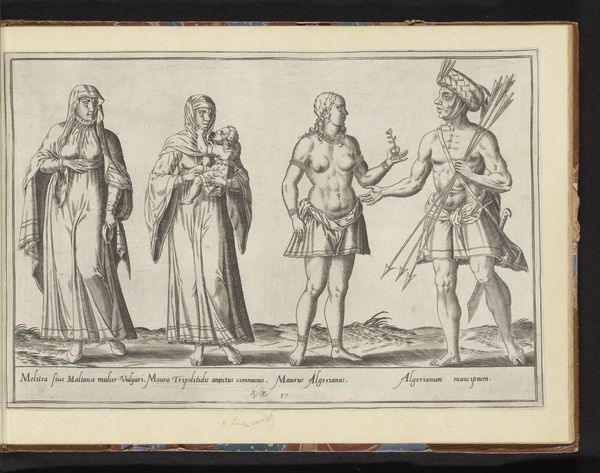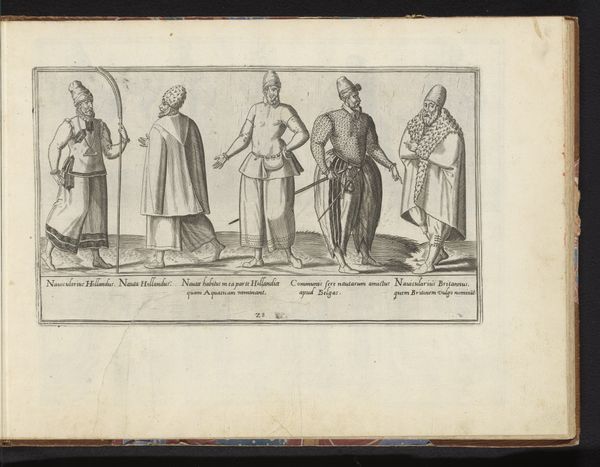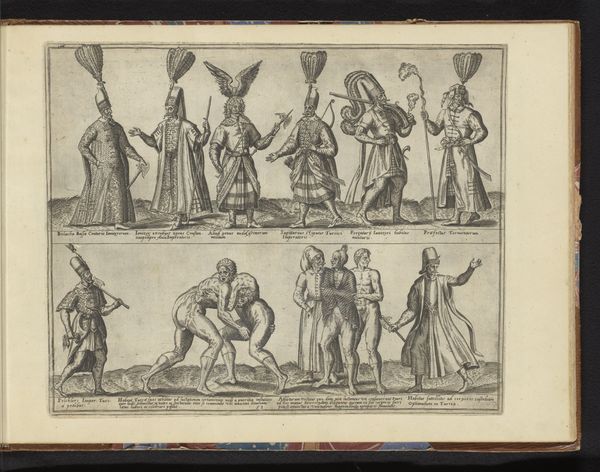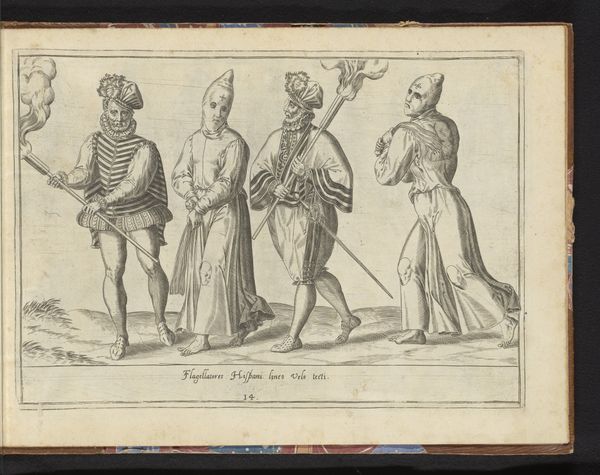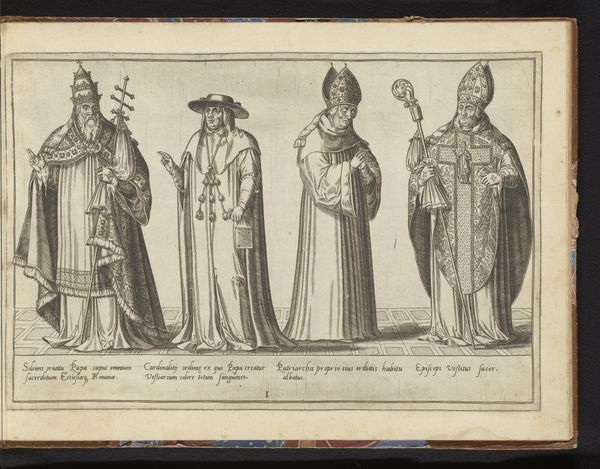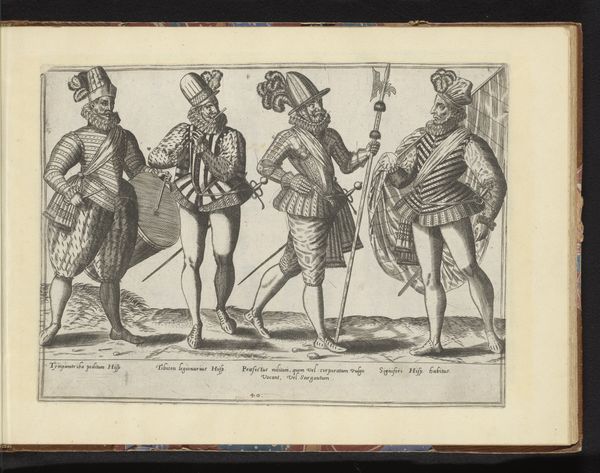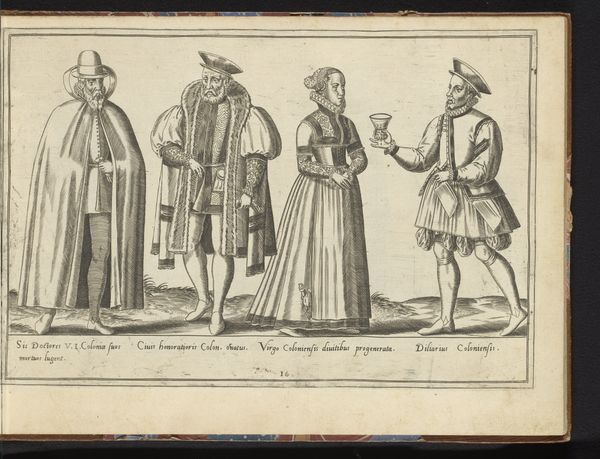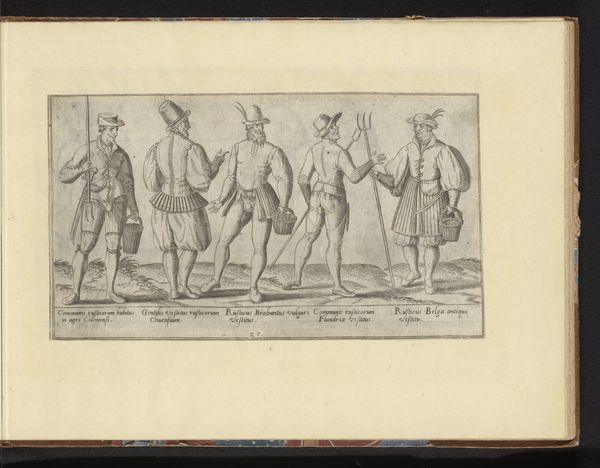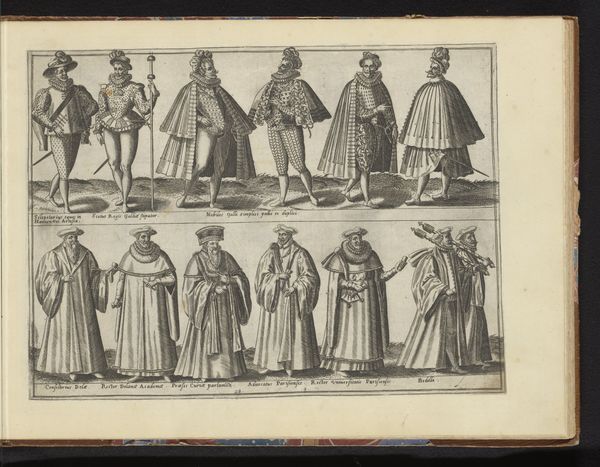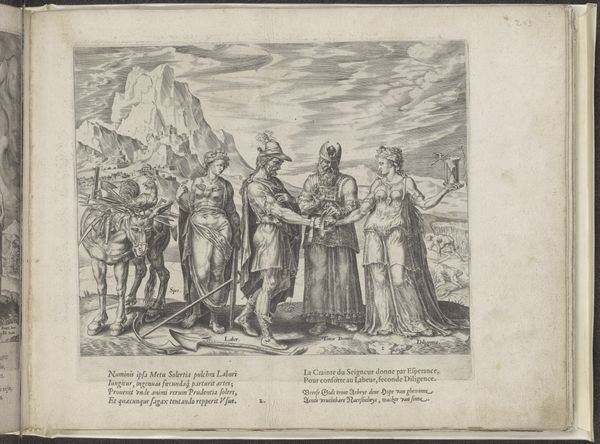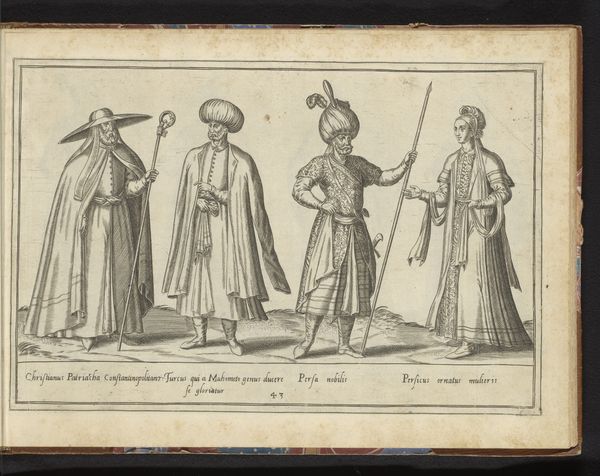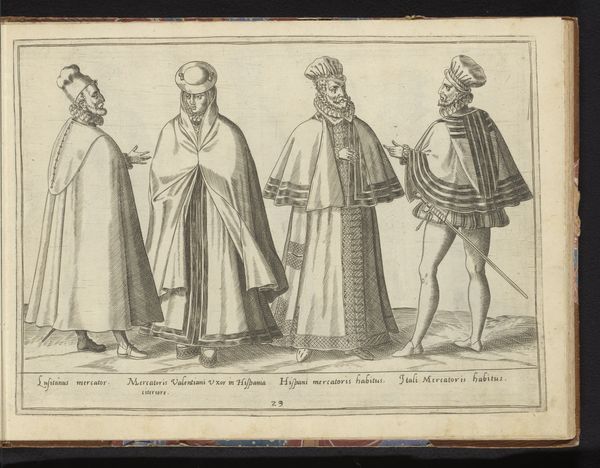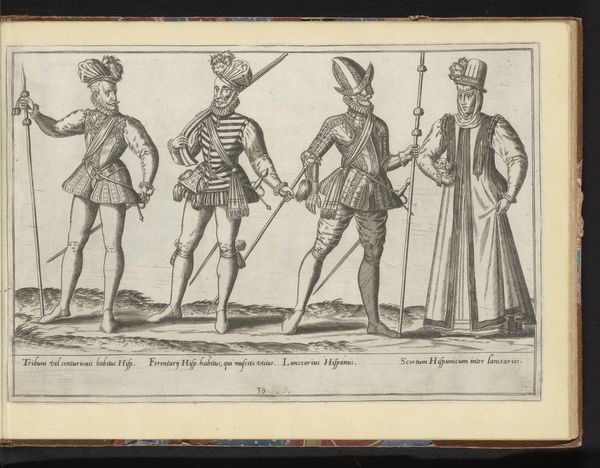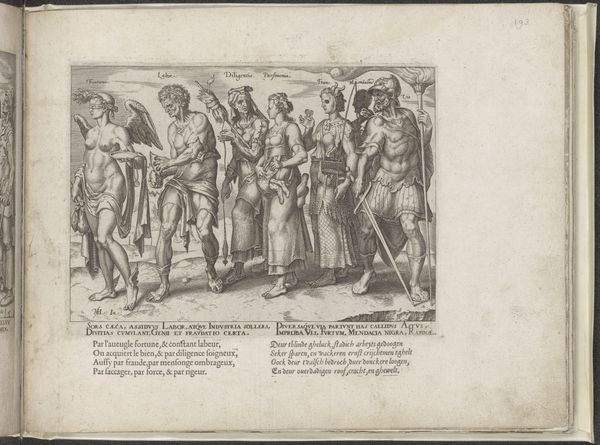
Vijf oosterse mannen, gekleed volgens de dracht van ca. 1580 before 1581
0:00
0:00
print, engraving
#
portrait
# print
#
figuration
#
11_renaissance
#
history-painting
#
engraving
Dimensions: height 265 mm, width 360 mm
Copyright: Rijks Museum: Open Domain
Abraham de Bruyn created this engraving around 1580, depicting five men in what was then perceived as 'eastern' attire. Observe the figure on the far right, brandishing an axe and draped in animal skin, a garb reminiscent of ancient depictions of wild men or satyrs. The axe, a symbol of power and virility, has roots stretching back to classical antiquity, reappearing in varying forms and contexts, from the Roman fasces to folkloric woodcut illustrations of wild forest creatures. Consider the emotional weight such imagery carries. The wild man embodies primal instincts, the untamed aspects of human nature that both terrify and fascinate. This symbol, deeply embedded in the collective unconscious, surfaces repeatedly in art and literature. The cyclical return of such symbols speaks to our ongoing dialogue with the past, each era reinterpreting and reimagining these potent images.
Comments
No comments
Be the first to comment and join the conversation on the ultimate creative platform.
